
views
Pre-Cleaning the Sofa

Vacuum up large particles. Before getting into the deep-cleaning, you want to remove any surface debris or particles from the surface of the sofa. Use a dust-buster or a hose attachment on a full-sized vacuum cleaner to clear the sofa. Use the long, narrow attachment to get into the crevices. Vacuum all the surfaces of the cushions. Remove the cushions and vacuum the base of the sofa.
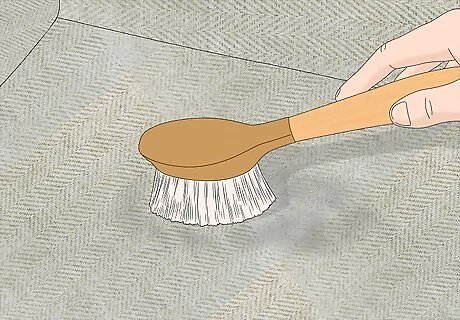
Use a bristle brush. If there are any spots that have heavy dust or dirt caked in, use a stiff-bristled brush to break up the spots and vacuum up the released dirt. Rub vigorously, but not hard enough to damage the fabric.
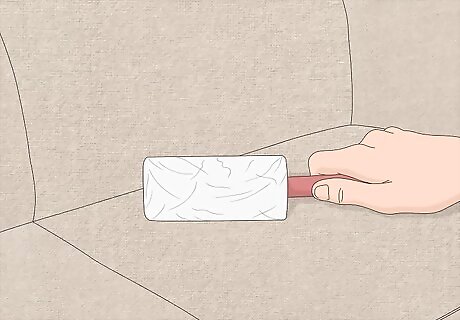
Remove lint and fur. Although some companies make products specifically for households with pets, your average vacuum cleaner won’t be able to remove lint or pet hair. Use a lint roller to remove what the vacuum cleaner can’t. Work in a systematic grid across the entire surface of the sofa to ensure you don’t miss any hair.

Wipe down any exposed hard surfaces. Many sofas have exposed wood or other materials, and you want to make sure you give them attention too. Find a cleaning product appropriate for the surface you want to clean. An all-purpose surface cleaner will suffice if you don’t have a surface-specific product on hand. If the spray zone is broad, spray into a paper towel and simply rub that over the surface to be cleaned. This will prevent getting unwanted chemicals on your fabric.
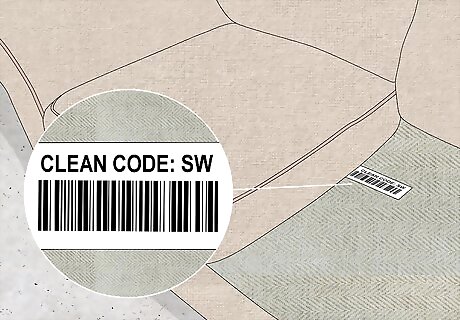
Determine the sofa fabric. Find the tag that tells you what the sofa cover is made out of. These tags usually have instructions for what cleaning products you should use on the fabric. “W” means to use a water-based detergent with a steam vacuum. “WS” means you can use either a water-based detergent with a steam vacuum or a dry-cleaning detergent. “S” means to use only a dry-cleaning detergent. “O” means the material is organic, and should be washed using cold water. “X” means to either vacuum and bristle-brush alone, or to use a professional service for shampooing.
Cleaning a Fabric Sofa with Water-Based Detergent and a Steam Cleaner
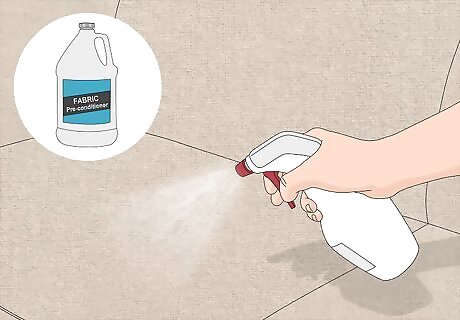
Pre-condition the fabric. Fabric pre-conditioner might not be found in your average grocery store, so you may have to purchase it online if you can’t find it elsewhere. It’s used to dissolve and loosen soiled debris and oil for easier removal during shampooing. Spot-test the preconditioner on a spot of the sofa that isn’t readily viewable to make sure it doesn’t result in discoloration. Spray the pre-conditioner over all the sofa surfaces you plan to shampoo.
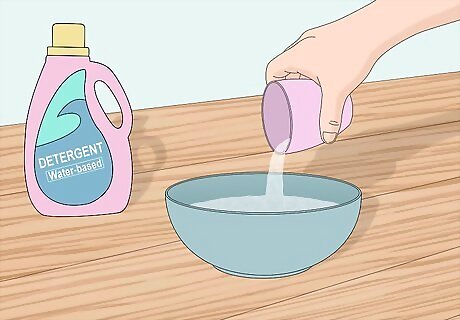
Make a solution of detergent and water. Mix 3 ounces of your water-based detergent with 3 ounces of water in a bowl or other container.
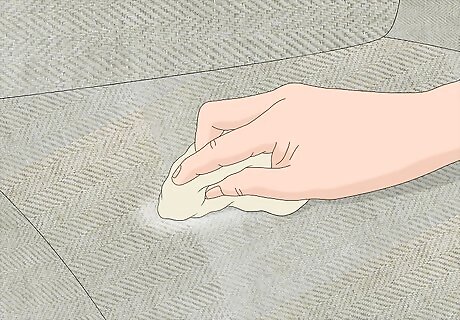
Spot-test your detergent solution. Dip a rag into the solution and rub it on a little-seen portion of the sofa. You can use the same spot you tested the preconditioner on. Let the solution sit on the fabric for 10 minutes, then check it. Press a paper towel to the spot to see if any of the fabric’s dye comes off on it. If there’s no discoloration, move on to the next step.
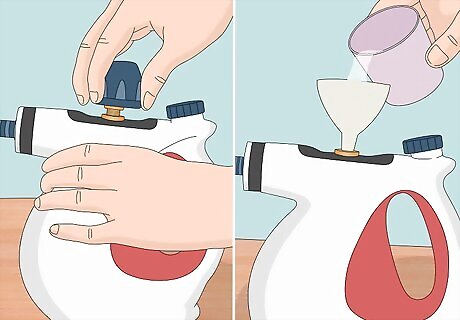
Prepare the steam vacuum. Different models of steam vacuums might look different, so this step will provide very general instructions. Locate the tank on your team vacuum, and unscrew the cap that keeps the liquid in. Pour the solution of fabric shampoo and water into the tank, then replace the lid. Attach the hose if it’s not permanently attached. Attach the stair/upholstery attachment to the end of the hose.
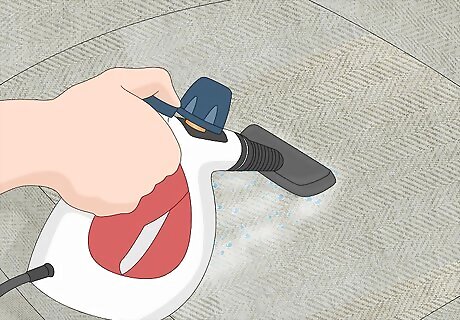
Apply the shampoo to the sofa. Place the nozzle against the sofa’s fabric and hold down the trigger or button that releases the solution you poured into the tank. Keeping the button depressed, move across the surface of the sofa in a grid pattern, just as you did with the vacuum cleaner earlier. Make sure you apply the shampoo to the entire sofa. Move slowly to ensure even distribution of the shampoo.
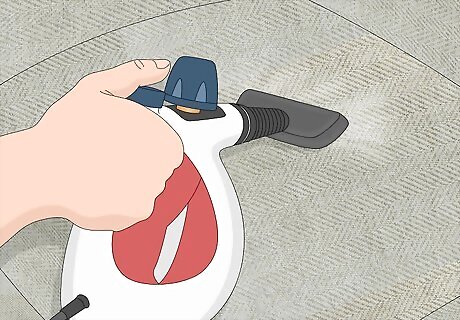
Remove the excess detergent. Release the button that applies the shampoo. Move the nozzle across the surface of the sofa once more this way, sucking up excess detergent back into the vacuum.
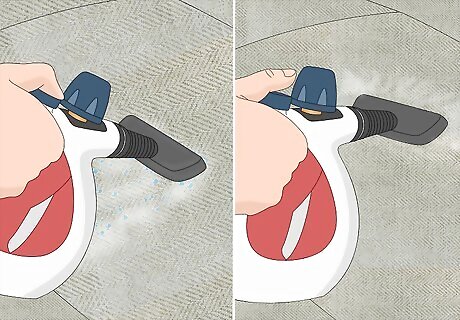
Repeat the process as necessary. If there are particular spots that need extra shampooing, spot-treat them with the nozzle. However, don’t over-shampoo any area, as it can result in permanent discoloration.
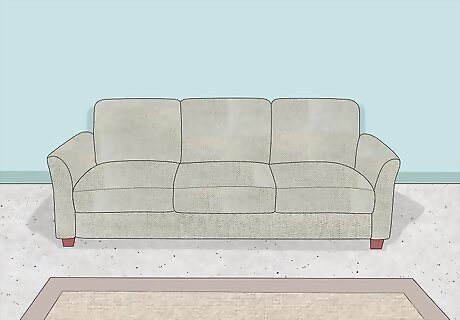
Let the sofa air-dry. No amount of vacuuming with the button released will dry the fabric out. Just leave the sofa alone until it air dries completely.
Dry Cleaning a Fabric Sofa
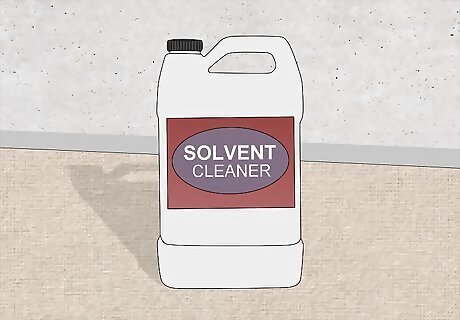
Purchase a dry cleaning solvent. The name is a little misleading, as dry cleaning products aren’t actually “dry.” They’re liquids — but they don’t have any water, like water-based solvents do. You may be able to find dry cleaning solvents in the cleaning aisle of the grocery store. If not, you can purchase it easily online.

Ventilate the room. Dry cleaning solutions have a very strong odor, so open any doors and windows in the area to let the smell escape and let clean air in. Turn on a ceiling fan or set up a floor fan pointing toward the window or do to encourage the fumes to leave the room.
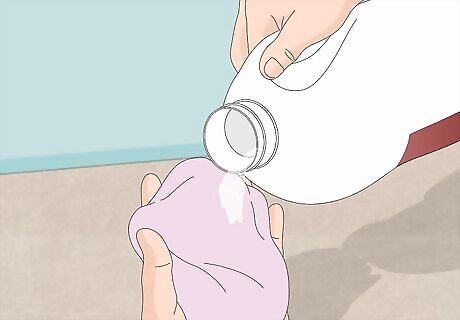
Apply the dry-cleaner to a clean rag. Rather than applying the solution directly to the couch, you want to apply it to a rag that you’ll blot against the stained portions of the fabric. These solutions tend to be very strong, so remember that a little goes a long way. Follow the guidelines on the packaging for the specific product you purchased.
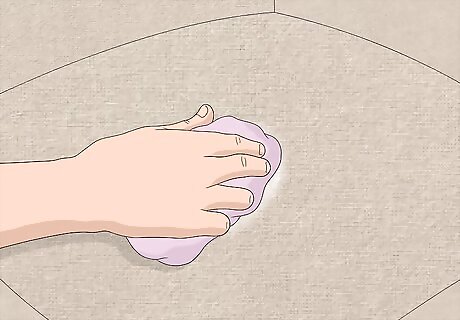
Spot-test the solution. Rub the rag on a small, little-seen area of the couch. Wait 10 minutes and check to see if there has been any discoloration on the sofa fabric. Press a paper towel against the wet area to see if any dye comes off. If not, move on to the next step.
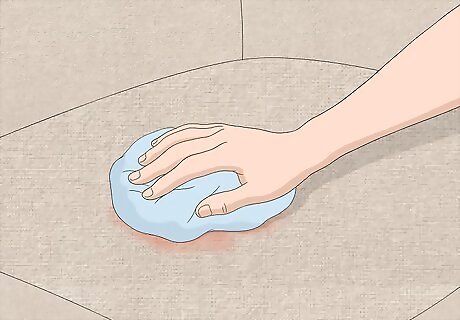
Press the rag onto the stained portions of the couch. You don’t want to rub the stains — just to press the rag with dry cleaner on it against them. This might take a long time, but don’t get impatient and apply too much dry cleaner to the stain. This might harm the fabric. Take breaks and allow the solvent to dry from time to time for heavy stains that require a great deal of treatment. Reapply dry cleaner to the rag as necessary, but remember to show restraint.
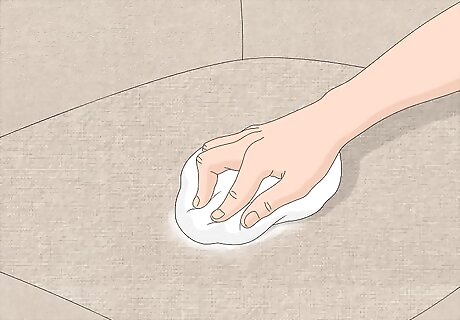
Blot up the dry cleaner. If you let the chemicals sit on your stain for too long, they can leave discoloration on your fabric. To remove the dry cleaner from the fabric, moisten a new clean cloth with water. It should be damp, but not soaking wet. Blot it over the stains, re-washing and wringing it out as necessary. Once you’ve finished, let the couch air dry.
Cleaning a Leather Sofa
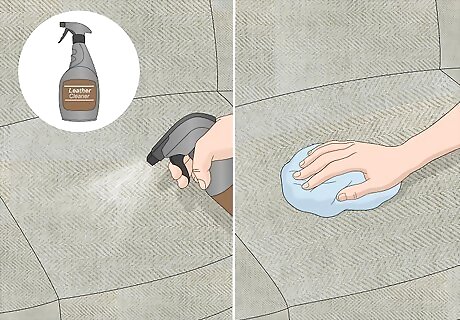
Buy a gentle leather cleaner. Though wiping a leather sofa down with a moist rag will work as part of your regular cleaning routine, every once in a while, you should give it a proper cleaning. Harsh chemicals can damage and discolor the leather, so purchase a product specifically designed for leather upholstery. If you cannot find such products at the grocery store, try a larger department store like Target or Walmart. You can also buy these products easily online.
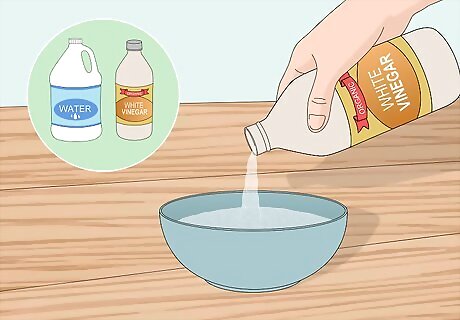
Make a cleaning solution with white vinegar. If you don’t want to spend money on a cleaner, you can make an effective cleaning product cheaply and easily at home. Simply mix equal parts water and white vinegar in a bowl.
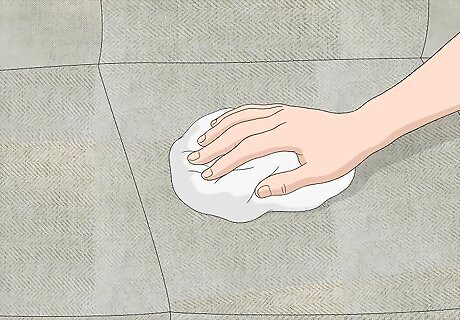
Apply the cleaner to the couch. You don’t want to apply the cleaner directly to the surface of the sofa. Instead, you’ll apply it to a rag and use that to apply it to the leather. Wipe the rag over the entire sofa, making sure to work in a grid pattern so you don’t miss anything. The rag should be damp, but not soaking wet.

Wipe the sofa clean. Use a fresh, dry rag to wipe the leather clean of the cleaning product you just applied to the surface.
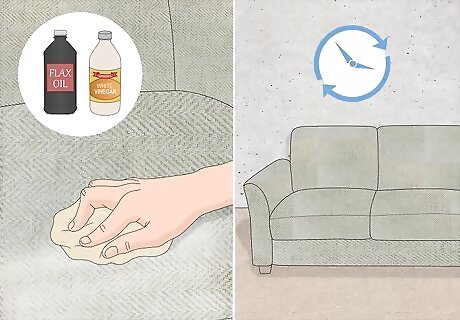
Condition the couch overnight. Make a solution that’s one part white vinegar and two parts linseed or flax oil. Rub that onto the couch in a grid pattern using another fresh, clean rag. Let this solution work on the sofa overnight, or for about eight hours.
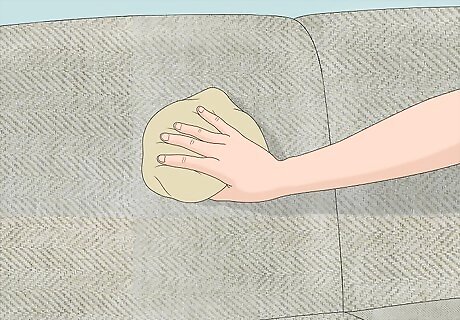
Buff the sofa. After you’ve let the couch condition overnight, rub the sofa down with another fresh, clean rag. This will make the leather healthy and shiny, like new!
















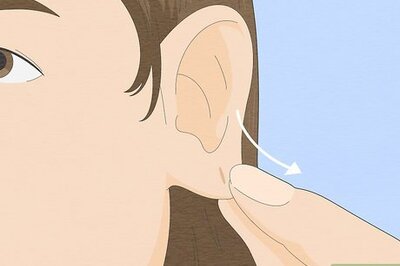
Comments
0 comment